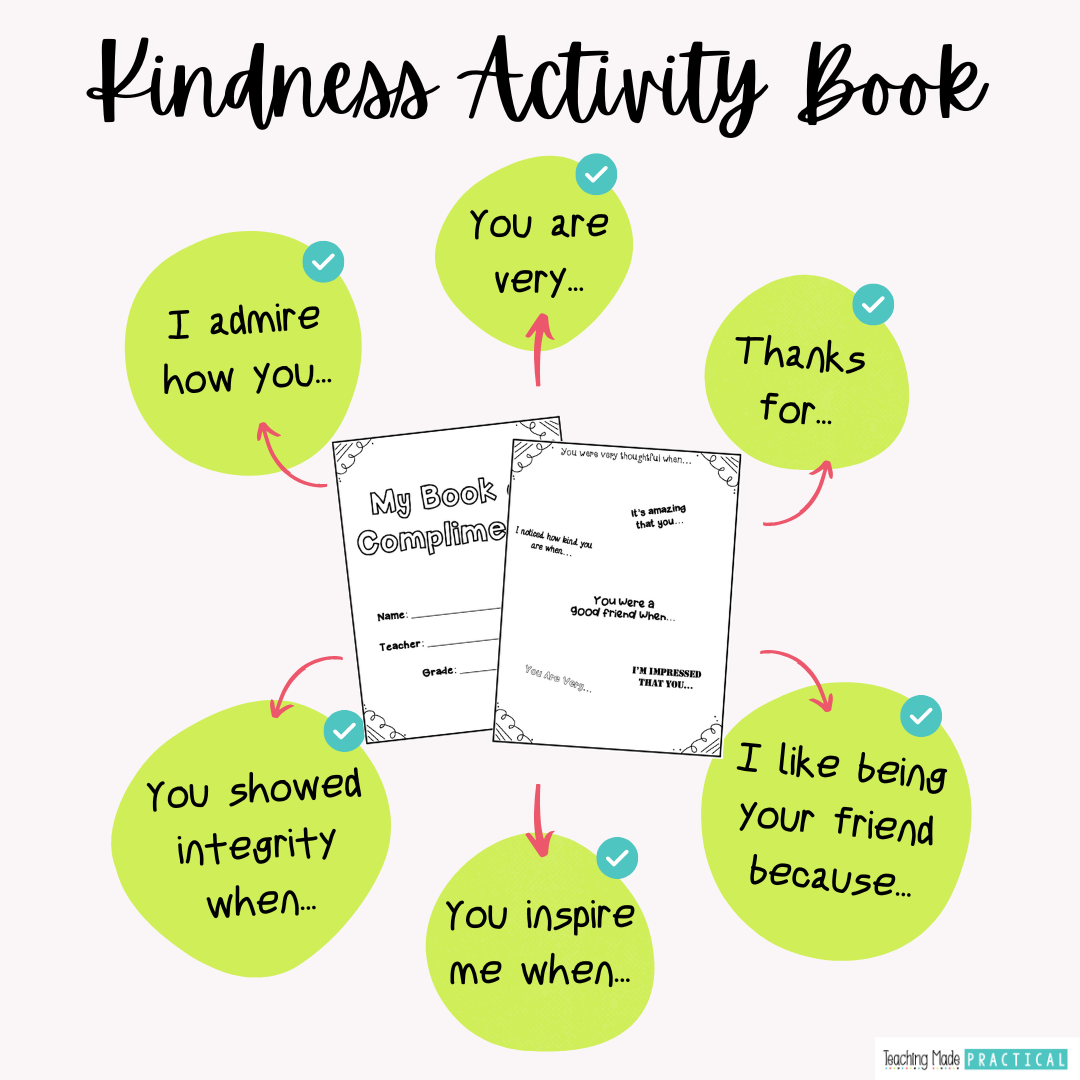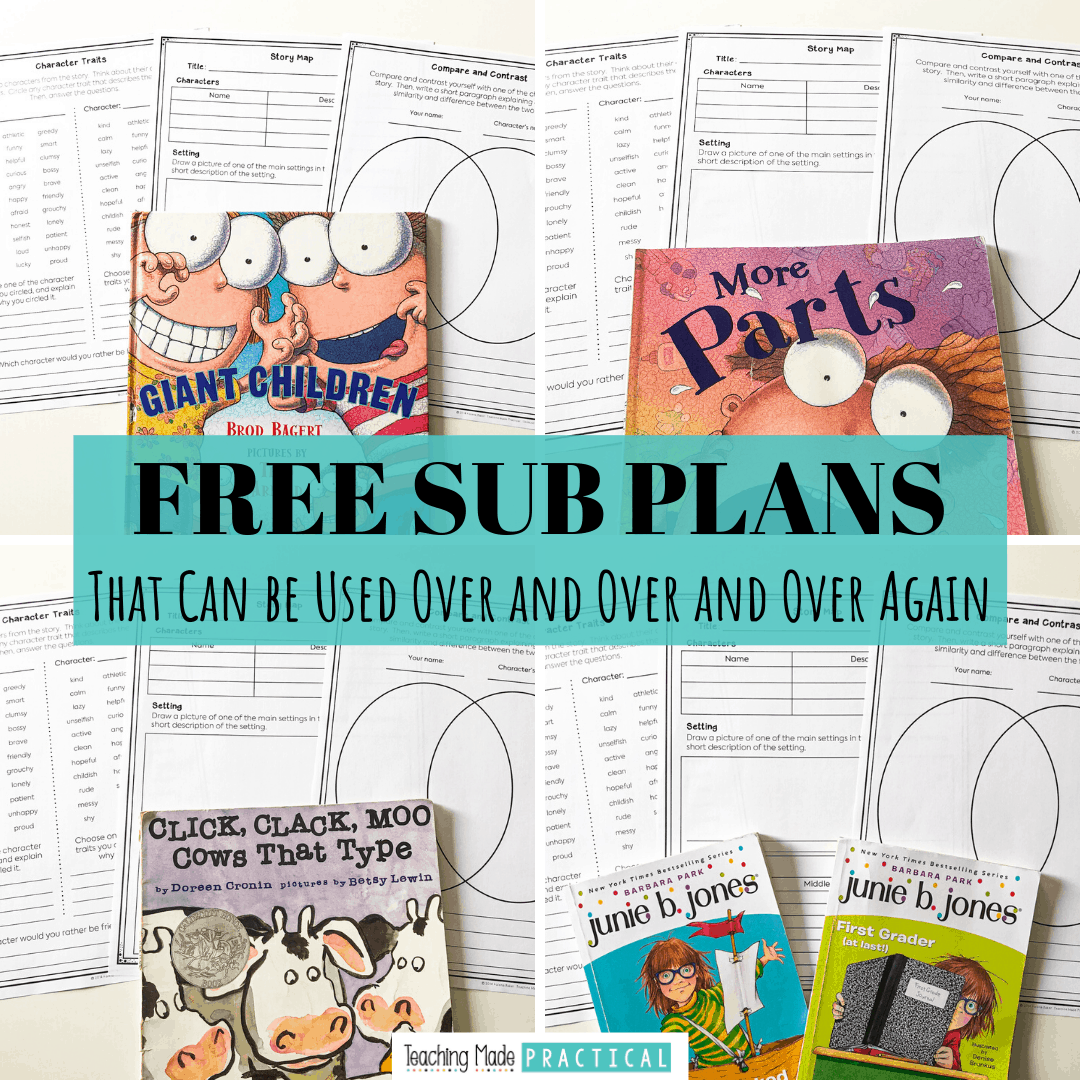
Looking to create a culture of kindness in your 3rd, 4th, or 5th grade classroom? The kindness ideas and activities below will help you come up with a plan that works for you and your students.
Whether you are heading back to school and want to start the year off with a culture of kindness, or you are just looking for ideas to sprinkle in throughout the school year, you will find something that will help your upper elementary students be kinder.
1. Model Kindness in the Classroom
This is obvious, but yet essential to creating a culture of kindness in your classroom. The importance of modeling kindness to your students cannot be overstated. While some of your students probably see kindness modeled for them at home in one form or another, many of your students might not.
Model kindness by listening carefully to students, offering empathy, being thoughtful, apologizing when appropriate, etc.
Students will clearly be much more inclined to be kind to their classmates when they feel their teacher is being kind to them.
2. Help Students Substitute Unkind Words with Kind Words
Take some time at the beginning of the school year to teach students to substitute kind words for common unkind words.
For example, instead of saying, "Shut up," a student could say, "That is hurting my ears," or "That hurt my feelings."
With your students, brainstorm some common hurtful phrases. Then, brainstorm some alternatives that students can use that are kinder. Use these ideas to make an anchor chart that you can hang in your classroom for students to refer to.
Throughout the school year, add to this list as you notice there are certain hurtful words or phrases that keep being used by students.
3. Celebrate Kindness When You See It
Drawing attention to and celebrating your students for being kind is one of the best ways to encourage more kindness! There are so many different and fun ways to do this in your upper elementary classroom.
Check out these 8 fun ideas to draw attention to and celebrate kindness you see in your students.
4. Practice Saying Kind Words and Giving Compliments
Write Thank You Notes
4th grade teacher Emilie Rohr has her students write thank you notes to support staff as a way of practicing kindness.
You could also have students write thank you notes to policeman, firefighters, veterans, parents, grandparents, volunteers, or other people in their life that have made an impact.
This No Prep Thank You Letter Template includes scaffolding to help your students write more meaningful thank you letters, as well as to help them practice organize their writing. It can be used multiple times throughout the school year - anytime you want your students to write thank you notes!
Is It Helping Or Hurting?
Tattling is an all too common thing in 3rd, 4th, and 5th grade. Sometimes teaching students NOT to say anything is just as helpful as teaching them to say something kind.
When students come to K-3 teacher Anna to "tell her something," she asks them, "Is it helping or hurting?" This is an easy way to regularly remind your students that our words can be either build each other up or teach each other down.
Class Compliments
Give your students an opportunity to compliment each other. This is something that every classroom should do at least once throughout the school year.
This Compliments Book includes sentence starters to help your students write more meaningful compliments. Print it out, give each student a book, and let your students write compliments to each other! It makes a great keepsake that students can refer to any time they are feeling down.

3:1 Ratio
No matter how many activities and lessons you do in an attempt to create a culture of kindness in your classroom, you will have students that say unkind things.
Anytime a student says something unkind in 4th grade teacher Melaney Hedrick's class, she has them say 3 kind things. This is an authentic way for students to practice using kind words.
5. Use No Prep Kindness Worksheets
These 12 no prep worksheets have students think about kindness in a variety of different ways. They ask students to think about ways others have been kind to them, ways they could be kind to others, vocabulary associated with kindness, and more.
These worksheets make meaningful time fillers for those times when you need students working independently but want them to be working on something purposeful.
6. Teach Kindness Through Read Alouds
Choosing your read alouds wisely is an easy way to create a culture of kindness in your classroom and reinforce it all year long. There are so many good picture books that address different themes related to kindness.
7. Complete A Kindness Challenge
Doing a kindness challenge is a fun way to create a culture of kindness in your classroom, as well as give students a variety of practical ideas for being kind.
Most kindness challenges are one month long. Every day, students do a different act of kindness for someone at school or home.
This is a popular activity, so it is easy to find kindness challenges for you to adapt to your classroom. You can use this free kindness challenge that already has acts of kindness included for your students to do. If you want your students to be more hands on in the acts of kindness, then use this free editable kindness calendar to create your own kindness challenge.
If you want to challenge your students to acts of kindness all year long, consider having a Random Acts of Kindness Club. The club can come up with their own random acts of kindness to do, or offer suggestions like:
- creating welcome packets for new students
- writing thank you notes to custodians, librarians, secretaries, or other often overlooked staff
- making kindness posters to hang in the school hallways
- collecting money or clothing for a special cause
- making get well cards for a sick classmate
- making a video of the club singing Christmas carols to send to a nursing home
8. Build Relationships
In the children's book Enemy Pie, the boy turns an enemy into a friend simply by spending time with him. Create a culture of kindness by helping students build meaningful relationships with their classmates - even the classmates that they might otherwise avoid.
One fun way to do this is to pair upper elementary students up and have them interview each other. They can ask each other questions, record responses, and then reflect on their similarities and differences. This No Prep Interview a Classmate Resource will walk students through the entire process.
You can also just facilitate student discussion, giving students opportunities to talk with each other about a variety of topics. Eventually, they are bound to come across something they have in common. These 33 discussion questions can be used throughout the school year to help with this.
While you can use these ideas and activities anytime throughout the school year to help encourage a culture of kindness, starting at the beginning of the year will always be best!
Never Stress Over Sub Plans Again!

Make copies, find a fiction book, and you'll be ready for any emergency that comes your way!



